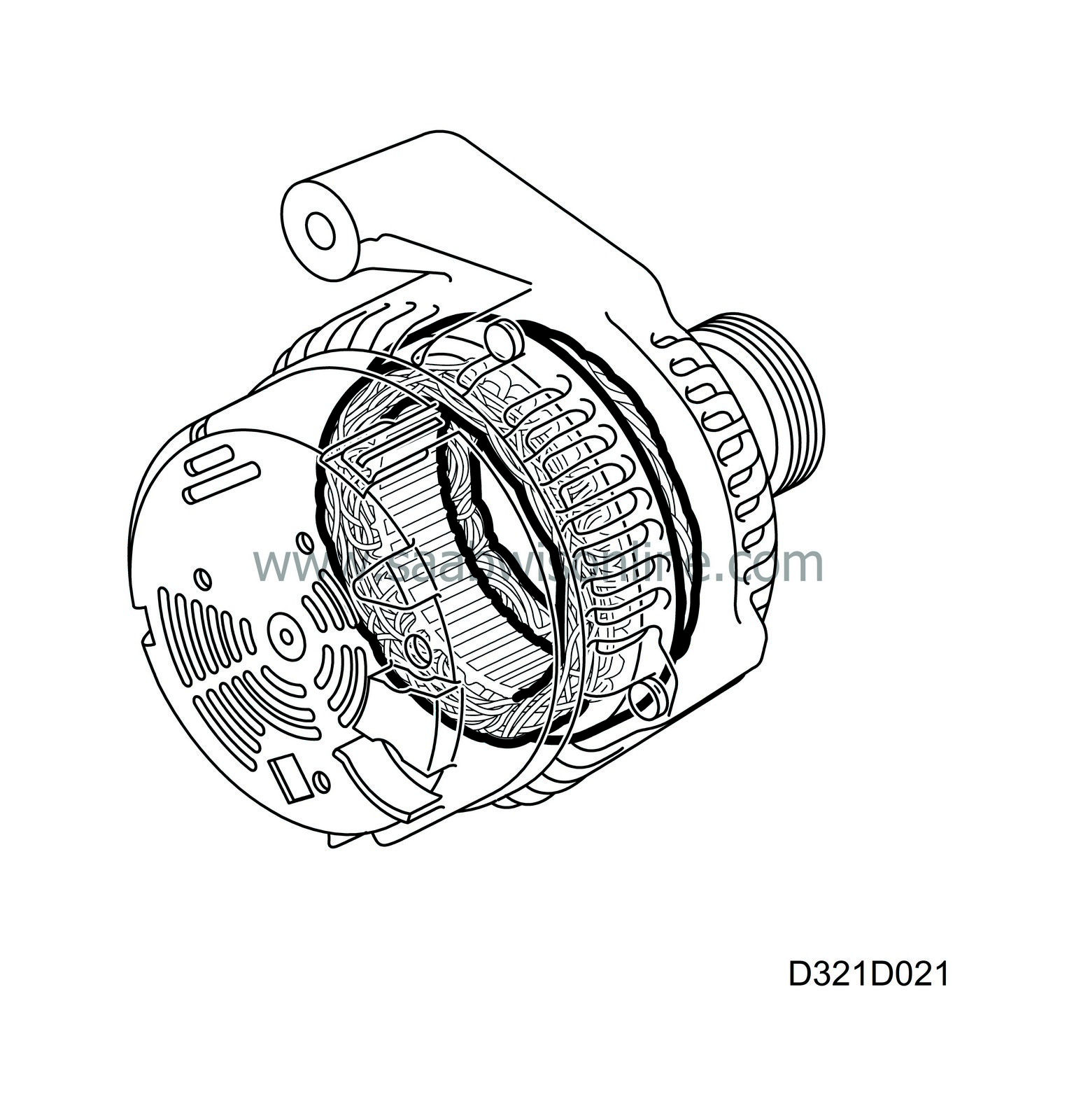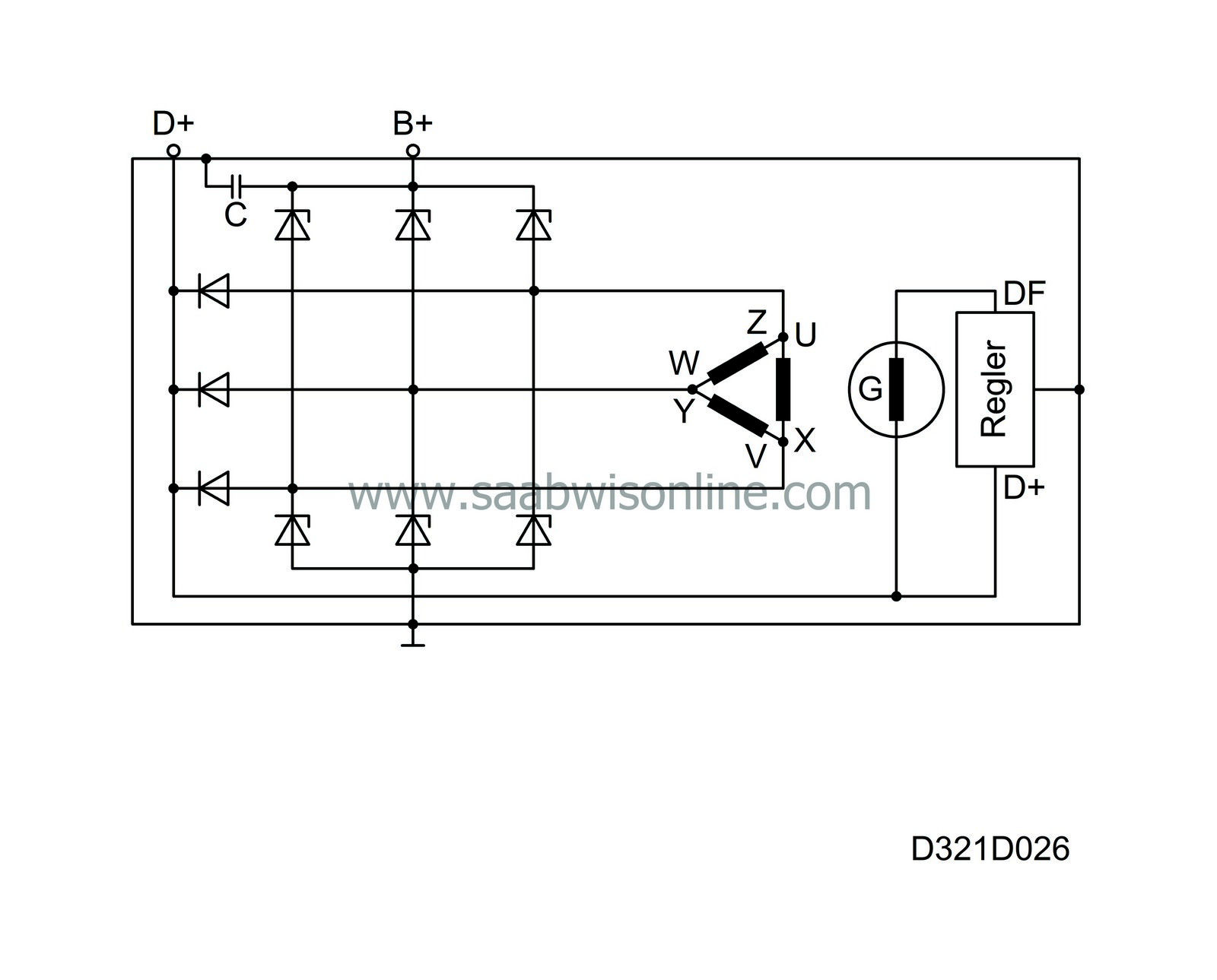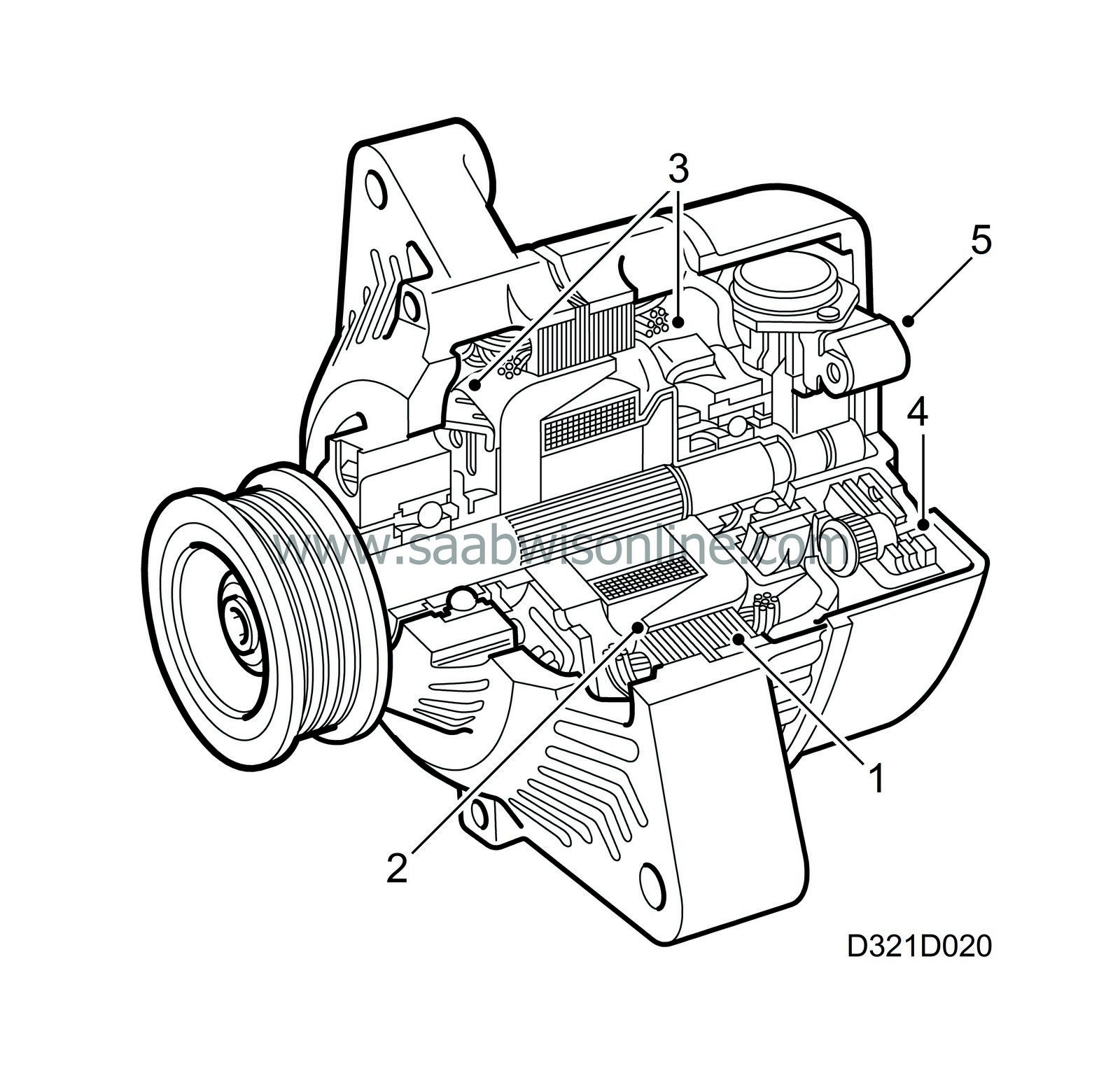Generator design
| Generator design |
| 1. |
Stator
|
|
| 2. |
Rotor with slip rings
|
|
| 3. |
Integral fans
|
|
| 4. |
Rectifier unit
|
|
| 5. |
Voltage regulator
|
|
The generator is of AC type, with a built-in charge regulator.
The generator is driven by the engine via a multigroove V-belt from the crankshaft pulley.
The gear ratio is 1:2.8 for petrol engines and 1:2.9 for diesels.
Three different generators are available for the Saab 9-3:
| • |
90 Ampere
|
|
| • |
120 Ampere
|
|
| • |
130 Ampere
|
|
the 120 A generator being used in diesel-engined vehicles.
| Stator |

The stator is fixed, and consists of sheet metal with grooves that are insulated from each other and pressed together to form a rigid core. The wave-shaped stator windings are carried in the grooves. They are star- or delta-connected, with 120° spacing, and deliver a three-phase alternating voltage to the rectifier.
| Rotor with slip rings |

The rotor consists of two halves (claw-type poles) that mesh with each other. They are pressed onto the rotor shaft, and the number of claws on the rotor is 12, i.e. there are 12 poles, with one half having six north poles and the other six south poles.
The excitation winding is fixed on the rotor shaft between the claw-type pole halves.
The excitation winding consists of a circular coil surrounded by the claw-type poles. An excitation voltage from the regulator is fed through the brushes, which are in contact with the slip rings.
| Integral fans |

Heat that builds up in the generator while it is running can eventually cause damage. To dissipate it, the generator has two integral fans, powered from the rotor shaft.
| Rectifier |

The voltage generated in the stator winding must be converted to direct current before it can be used in the car's electrical system. This is done by six Zener diodes, two for each phase winding.
| Voltage regulator |

The purpose of the voltage regulator is to keep the generator output voltage constant, whatever the load and the speed of rotation.
If the generated voltage exceeds the rated reference value (roughly 14 V), owing to the load, the regulator will reduce or interrupt the excitation current. Excitation eases off, and the voltage delivered by the stator windings declines. When the voltage goes below the reference value of about 14 V, the excitation increases, causing the generator voltage to rise until it once again exceeds the reference value. This process is constantly repeated.
| Internal circuitry |


Six Zener diodes are used to convert the alternating current generated by the stator windings to direct current.
The stator windings form three phases, and are delta- or star-connected.
An excitation diode is connected to each of the three stator windings.
The six rectifier diodes are bridge-connected. They are pressed in a diode retainer. All according to polarity, the diode retainer is isolated from ground or directly connected to it.
The excitation winding is mounted on the rotor, which is configured with claw-type poles. Every other claw acts as a north pole and the rest as south poles.
The ends of the excitation winding are connected to slip rings, through which the excitation current is supplied.
| Generator, description of operation |

When the ignition key is turned to ON or ST, +15 is supplied to MIU.
The voltage is fed from the ignition switch via the indicator lamp to terminal D+ on the generator and from there to the rotor's excitation winding and then grounded via the regulator.
When the current passes through the rotor a magnetic field is formed around it. When the engine is started and the rotor starts to rotate, the magnetic field also rotates, generating an alternating current in the stator winding. This current is rectified when it passes through the diodes and is then fed to the car's electrical system. The voltage obtained from the stator winding also passes through the excitation rectifiers to the voltage regulator and influences its operation. When the voltage exceeds about 14 V, the voltage regulator reduces the current through the excitation winding. The strength of the magnetic field is reduced, and with it the alternating current in the stator winding.
The charging indicator lamp is also affected by the voltage from the stator winding via terminal D+ on the regulator. The difference in voltage between the two sides of the lamp levels out and the lamp goes out. This serves as an indication that the generator is charging.



